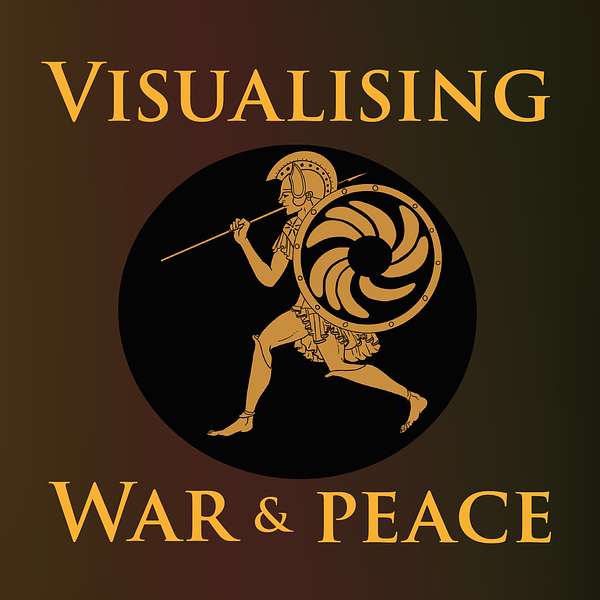
Visualising War and Peace
How do war stories work? And what do they do to us? Join University of St Andrews historian Alice König and colleagues as they explore how war and peace get presented in art, text, film and music. With the help of expert guests, they unpick conflict stories from all sorts of different periods and places. And they ask how the tales we tell and the pictures we paint of peace and war influence us as individuals and shape the societies we live in.
Visualising War and Peace
Visualising peace and conflict with J.R.R. Tolkien
In this episode, Visualising Peace student Albert Surinach I Campos interviews Prof. Giuseppe Pezzini, Associate Professor of Latin Language and Literature at Corpus Christi College, Oxford. While Prof. Pezzini's main area of research is in Classics, his interests extend beyond the ancient world, focussing particularly on Tolkien life and literary corpus. He is set to publish a monograph soon on Tolkien’s theory of imagination, stemming from his work as Tolkien Editor for the Journal of Inklings Studies and a collaboration with the ITIA Institute at the University of St Andrews, where he previously taught.
Tolkien’s The Lord of the Rings and his other works have had a profound impact in the 20th and 21st century. While film versions of his books have particularly influenced habits of visualising war, Tolkien's views on peace have lots of relevance in the modern world. In this episode we discuss how peace and peacebuilding get represented in Tolkien’s corpus, the author’s personal experiences of war, and his attitude to pacifism. The conversation falls into four parts, exploring ideas of peace via Tolkien's representation of the four main races of Middle-Earth: elves, orcs, dwarves and men.
One feature of Tolkien’s works is his nostalgic view of a world in steady decline. After a glorious golden age, the successive eras of mortals are increasingly damaged by constant wars and injustices. Here, we see a very clear parallel with the Golden Age of antiquity, as well as with other mythologies throughout the world. No race embodies this diminishing 'golden age' as much as the elves, and discussion of them gets us thinking about Tolkien's nuanced perspectives on peace. To what extent is peace modelled as an escape (available only to some), as an ideal rather than a feasible, sustainable reality? And what can other characters - like the Ents - contribute to our understanding of why people go to war and what peacebuilding might involve?
Sauron and Orcs come particularly to mind when we visualise war in The Lord of the Rings. As Prof. Pezzini explains, the mythology behind orcs is murky, with their origins purposefully hidden, and they act much of the time as a stand-in for 'the other', a faceless, evil enemy that is easily demonised. In recent times, they have made their way into popular culture; for instance, some Ukrainians have referred to Russian soldiers as 'orcs'. However, Prof Pezzini reminds us that Tolkien's representation of orcs (outlined in a letter to his son) included some empathy and pity, not just dehumanisation. Similarly, his representation of dwarves and men encompasses both belligerence and more positive qualities, and this enables Tolkien to explore aspects of both war and peace with greater nuance. While reflecting on the more militarising nature of film versions of Tolkien's books, Prof. Pezzini helps us to unpick different ways of visualising war and peace across his literary corpus, in relation to his own wartime experiences, offering lots of food for thought in relation to contemporary conflict.
We hope you enjoy this episode, as we travel to the fascinating world of Middle-Earth while trying to make sense of our own understanding of peace-building in the real world. For a version of our podcast with close captions, please use this link. For more information about individuals and their projects, please visit the University of St Andrews' Visualising War website and the Visualising Peace Project.
Music composed by Jonathan Young
Sound mixing by Albert Surinach I Campos